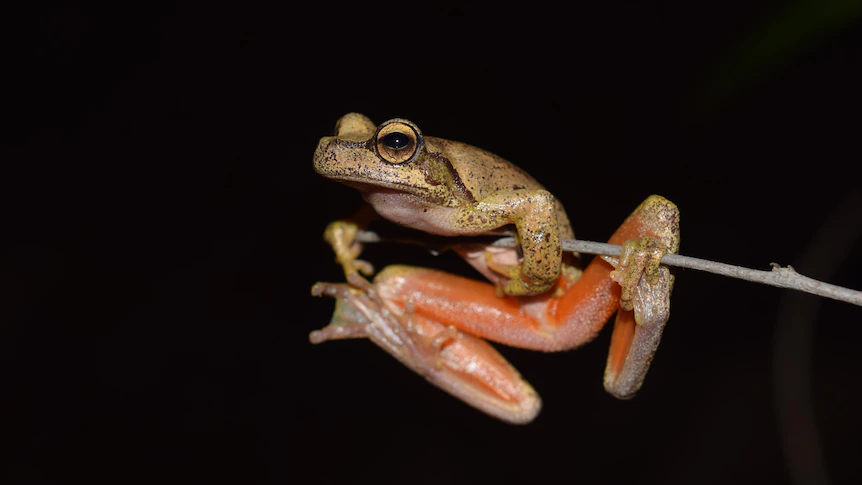By Mary-Louise Vince
Copyright abc

Scientists at the University of Newcastle have achieved a breakthrough in their quest to save an endangered tree frog species which only exists in three small, isolated regions in New South Wales.
For the first time ever the Littlejohn’s tree frog was bred in captivity in the university’s labs, marking a significant milestone in ongoing efforts to boost its population numbers.
The little brown amphibian, characterised by a striking orange-pattern on its inner legs, is confined to the Watagan Ranges, west of Newcastle, the Blue Mountains, and Woronora Plateau near Wollongong.
Conservation biologist Kaya Klop-Toker said after three years of trying to replicate its natural habitat they finally “cracked the code.”
“[The outdoor environment] gave them that trigger, and the really cold temperatures they needed [for] breeding,” Dr Klop-Toker said.
Two separate pairs of frogs were placed in breeding tanks and each produced about 200 eggs which resulted in 90 healthy tadpoles.
The successful project, conducted by the university’s Centre for Conservation Science, was part of a broader ongoing strategy focused on the Watagan population to maximise the recovery of the endangered frog both in the lab and in the wild.
The centre’s assistant director Alex Callen said 40 new ponds had also been created to help bridge and diversify two sub-populations of the species, living two kilometres apart.
“By building aquatic stepping stones we’ve connected frog populations that were previously cut off from each other” Dr Callen said.
New development threat
While significant in-roads have been made in efforts to save the Littlejohn’s tree frog from extinction, scientists warned a proposed renewable energy development in the Hunter region posed a serious new threat to the species.
The Hunter Transmission Line Project is a major state government energy infrastructure project proposed by the New South Wales government’s energy body, EnergyCo.
As part of the proposal, a new 110-kilometre overhead transmission power line would be built from the Bayswater coal fired power station near Singleton to Olney in the Lower Hunter Valley.
But scientists feared their latest conservation successes could be undermined because the preferred and proposed route for the project would cut through where the endangered species is known to exist.
“They’re planning to place a switching station right on top of known breeding ponds,” Dr Klop-Toker said.
“We’re really hoping the footprint, especially for the switching station, can be moved.”
In a statement, EnergyCo said it was “committed to working closely with ecologists from the University of Newcastle to assess and mitigate impacts on sensitive species in the proposed corridor”.
“We will continue to avoid and minimise impacts to the most valuable natural areas wherever possible,” it said.
Dr Klop-Toker said conservation management actions for the population would have been carried out as part of the project but insisted “there’s no alternative conservation that’s better than protecting the habitat that’s there”.
“They’re only in that location because there’s something about that patch of habitat that is really perfect for their survival,” she said.
Public submissions on the Environmental Impact Statement for the Hunter Transmission Line Project close on September 24.